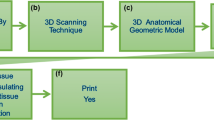Abstract
Introduction
Extracorporeal shock wave lithotripsy (ESWL) has been used increasingly in clinical practice over the last few years. The aim of this study was to investigate the effects of shock waves on cartilage often unintentionally placed inside the focal volume during ESWL. We investigated whether the physical state of the chondrocytes exposed to shock waves has an influence on cell lethality.
Materials and methods
Chondrocytes of 12 patients were exposed to shock waves generated by a Piezoson 300. We used 200 shock waves of different energy levels (0.08 and 0.26 mJ/mm2) and the cells were prepared in two physical states: a fluid suspension and a viscous alginate. After ESWL the percentage of dead cells was determined by microscopy. DNA electrophoresis was carried out to detect fragmentation of the DNA.
Results
A significant increase of dead cells at higher energy levels in suspension (P = 0.001) in contrast to alginate medium (P = 0.263) was detected immediately after ESWL.
The long-term survival of chondrocytes was not affected in either substance, as shown in an investigation of the cells three weeks after ESWL. At the molecular level a permeabilisation of the cell membrane was detected. DNA was not affected, even at high-energy levels.
Conclusion
Alginate is definitely closer to the real state of cartilage in vivo than suspension. Therefore the negative effects of shock waves which are shown in many investigations that used cells in suspension are not necessarily to be expected in vivo. It can be assumed that side effects will not occur in a clinical setting.









Similar content being viewed by others
References
Aushubel RM, Brent R, Kingston RE, Moore DD, Seidmann JG, Smith JA, Struhl K (1996) Current protocols in molecular biology. Wiley, New York
Bird NC, Stephenson TJ, Ross B, Johnson AG (1995) Effects of piezoelectric lithotripsy on human DNA. Ultrasound Med Biol 21:399–403. doi:10.1016/0301-5629(94)00130-6
Bräuner T, Brümmer F, Hülser DF (1989) Histopathology of shock wave treated tumor cell suspensions and mulicell tumor spheroids. Ultrasound Med Biol 15:451–460. doi:10.1016/0301-5629(89)90098-7
Brümmer F, Brenner J, Bräuner T, Hülser DF (1989) Effect of shock waves on suspended and immobilized L1210 cells. Ultrasound Med Biol 15:229–239. doi:10.1016/0301-5629(89)90067-7
Chen H-S, Chen L-M, Huang T-W (2001) Treatment of painful heel syndrome with shock waves. Clin Ortop 387:41–46. doi:10.1097/00003086-200106000-00006
Delius M (1997) Minimal static excess pressure minimises the effect of extracorporeal shock waves on cells and reduces it on gallstones. Ultrasound Med Biol 23:611–617. doi:10.1016/S0301-5629(97)00038-0
Delius M, Ueberle F, Eisenmenger W (1998) Extracorporeal shock waves act by shock wave-gas bubble interaction. Ultrasound Med Biol 24:1055–1059. doi:10.1016/S0301-5629(98)00070-2
Gambihler S, Delius M, Ellwart JW (1994) Permeabilisation of the plasma membrane of L1210 mouse leukaemia cells using lithotripter shock waves. J Membr Biol 141:267–275. doi:10.1007/BF00235136
Hammer DS, Rupp S, Ensslin S, Kohn D, Seil R (2000) Extracorporeal shock wave therapy in patients with tennis elbow and painful heel. Arch Orthop Trauma Surg 120:304–307. doi:10.1007/s004020050470
Huber P, Peschke P, Brix G, Hahn EW, Lorenz A, Tiefenbacher U, Wannemacher M, Debus J (1999) Synergistic interaction of ultrasonic shock waves and hyperthermia in the dunning prostate tumor R3327-AT1. Int J Cancer 82:84–91. doi:10.1002/(SICI)1097-0215(19990702)82:1<84::AID-IJC15>3.0.CO;2-N
Ko J-Y, Chen H-S, Chen L-M (2001) Treatment of lateral epicondylitis of the elbow with shock waves. Clin Orthop 387:60–67. doi:10.1097/00003086-200106000-00008
Kodama T, Takayama K (1998) Dynamic behaviour of bubbles during extracorporeal shock-wave lithotripsy. Ultrasound Med Biol 24:723–738. doi:10.1016/S0301-5629(98)00022-2
Kusnierczak D, Bracai DRC, Vettel U, Loew M (1999) Der Einfluß der extrakorporalen Stoßwellenapplikation (ESWA) auf das biologisch Verhalten von Knochenzellen in vitro. Z Orthrop 137:1–11
Lee S, McAuliffe DJ, Zhang H, Xu Z, Taitelbaum J, Flotte TJ, Doukas AG (1997) Stress-wave-induced membrane permeation of red blood cells is facilitated by aquaporins. Ultrasound Med Biol 23:1089–1094. doi:10.1016/S0301-5629(97)00083-5
Löhr JF, Uhthoff HK (1996) Tendinosis calcarea. Orthopade 25:484–493
Lokhandwalla M, Sturtevant B (2000) Fracture mechanics model of stone comminution in ESWL and implications for tissue damage. Phys Med Biol 45:1923–1940. doi:10.1088/0031-9155/45/7/316
Ogden JA, Toth-Kischkat A, Schultheiss R (2001) Principles of shock wave therapy. Clin Orthop 387:8–17. doi:10.1097/00003086-200106000-00003
Rompe JD, Eysel P, Hopf C, Krischek O, Vogel J, Bürger R, Jage J, Heine J (1997) Extrakorporale Stoßwellentherapie in der Orthopädie. Fortschr Med 115:26–33
Rupp S, Seil R, Gebhardt T, Kohn D (1998) Die extrakorporale Stoßwellentherapie (ESWT) am Bewegungsapparat. Saarl Arztebl 4(98):18–23
Seil R, Rupp S, Hammer DS, Ensslin S, Gebhardt T, Kohn D (1999) Extrakorporale Stoßwellentherapie bei der Tendinosis calcarea der Rotatorenmanschette: Vergleich verschiedener Behandlungsprotokolle. Z Orthop 137:310–315
Stephenson TJ (1996) Extracorporeal gall bladder lithotripsy—a review of tissue and cellular effects. J Pathol 179:4–9. doi:10.1002/(SICI)1096-9896(199605)179:1<4::AID-PATH458>3.0.CO;2-C
Williams JC, Stonehill MA, Colmenares K, Evan APE, Andreoli SP, Cleveland RO, Bailey MR, Crum LA, McAteer JA (1999) Effect of macroscopic air bubbles on cell lysis by shock wave lithotripsy in vitro. Ultrasound Med Biol 25:473–479. doi:10.1016/S0301-5629(98)00149-5
Wörle K, Steinbach P, Hofstädter F (1994) The combined effects of high-energy shock waves and cytostatic drugs or cytokines on human bladder cancer cells. Br J Cancer 69:58–65
Author information
Authors and Affiliations
Corresponding author
Rights and permissions
About this article
Cite this article
Renz, H., Rupp, S. Effects of shock waves on chondrocytes and their relevance in clinical practice. Arch Orthop Trauma Surg 129, 641–647 (2009). https://doi.org/10.1007/s00402-008-0668-9
Received:
Published:
Issue Date:
DOI: https://doi.org/10.1007/s00402-008-0668-9




